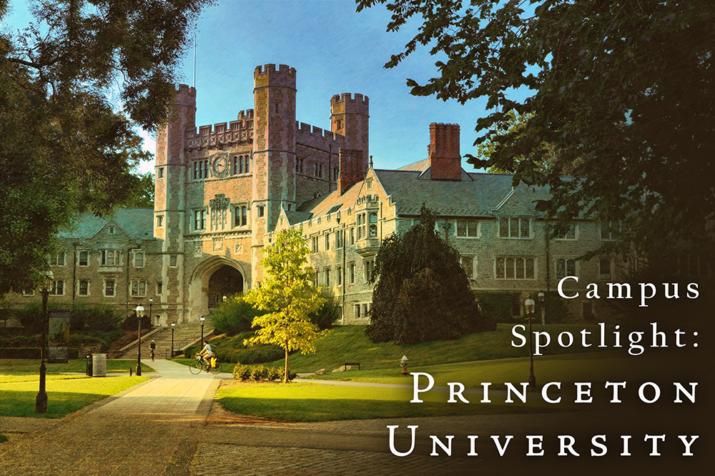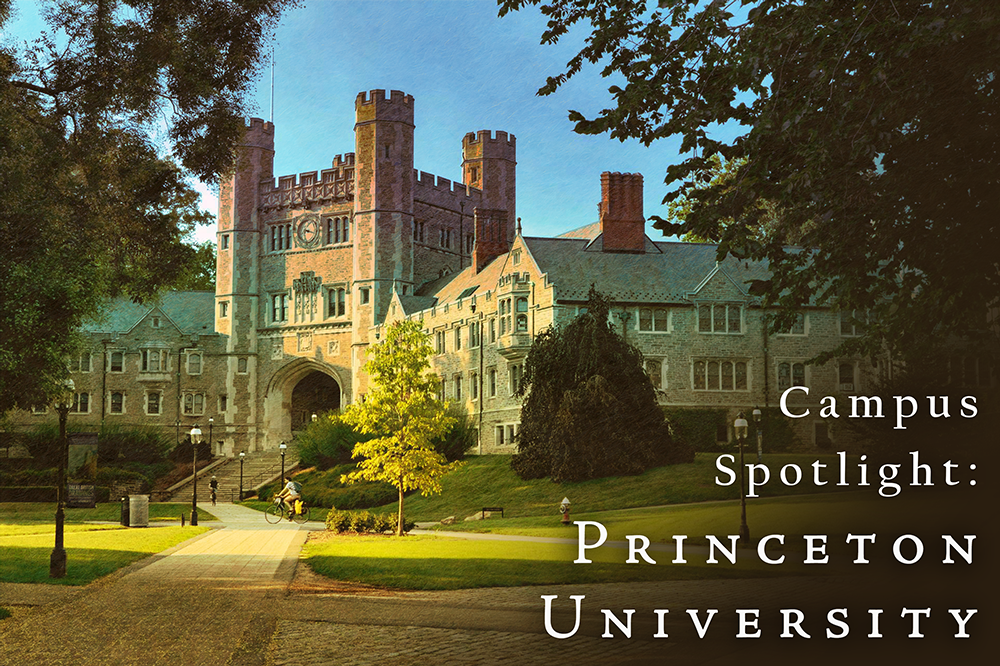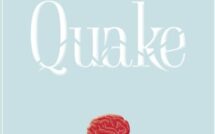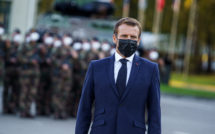

An introduction to our Campus Spotlight on Princeton University.
Roughly mid-way between New York and Philadelphia, Princeton University sits quietly in the suburbs of northern New Jersey. Originally founded in 1746, the private research university is one of the smaller Ivy League institutions. With just under 5,000 undergraduates to fill out the sprawling residential colleges (there are about as many deer in Princeton as there are econ majors—roughly 500), the campus atmosphere reflects the school’s reputation. Stately, focused, reserved. With no medical or law school, and many late-stage PhD candidates living off campus, graduate student life at Princeton is similarly intimate. Particularly in the humanities and social sciences, departments are small, so seminars are rarely populated by one discipline alone. As a result, graduate students have ample time to build relationships with students and faculty in other departments. The mahogany classrooms of East Pyne—one of the university’s most picturesque, nineteenth-century collegiate gothic buildings—hum with the energy of young scholars tacking swiftly across disciplinary boundaries.
This Campus Spotlight takes a closer look at one corner of Princeton in particular where students and faculty ask what it might mean to think across and in between disciplines in the contemporary academy. Founded by a number of faculty across several departments in the humanities in the fall of 2012, Princeton’s Interdisciplinary Doctoral Program in the Humanities (IHUM) is a “home for new experiments in an ancient enterprise.”[1] Although it has no single physical location, the program hosts a yearly speaker series, runs a range of interdisciplinary graduate seminars (often co-taught by IHUM executive committee members from multiple departments), and funds a dozen or so graduate student reading groups. The core of the program, however, is the IHUM fellowship year.
After passing their qualifying exams, doctoral candidates in the humanities and social sciences may apply for admission into the program, which grants students an extra year of funding and a joint PhD (e.g. English & IHUM) upon completion of their degrees. With this supplementary year of funding, students are encouraged to take a year-long, experimental detour away from their dissertation project. This might mean taking courses in other disciplines, working closely with faculty across departments, getting their hands dirty in an art studio, visiting archives across the country, or even doing short-term fieldwork abroad. The core requirement is that they come back to their dissertation project having tried out something that otherwise never would have been possible. As such, the pedagogical goal of the program is not merely to have students look at their objects of study from a new disciplinary vantage: rather, students are encouraged to formulate projects that thwart the possibility of disciplinary capture altogether. For, although understandings of “interdisciplinarity” vary widely throughout the program, Dolven and Burnett founded the program with a vision of interdisciplinarity that hews more closely to Roland Barthes’ sense of the term: “In order to do interdisciplinary work, it is not enough to take a ‘subject’ (a theme) and to arrange two or three sciences around it. Interdisciplinary study consists in creating a new object, which belongs to no one” (Barthes 1986, 72).
This spotlight provides a window into the work of IHUM graduate students and faculty, exploring the “new objects” that they have created and focusing in particular on scholars who work in Europe. The first piece is an interview with the program’s current director, Christy Wampole (Associate Professor of French). We discuss the shifting face of the program’s mission as seen by its many members, and then we turn to her most recent book, which takes up “interdisciplinarity” as both object and method. Degenerative Realism: Novel and Nation in Twenty-First Century France (2020) examines the emergence of a new literary mode in France that draws selectively on various academic disciplines (sociology, demography, economics, and history, among others) to paint melancholic portraits of national decline.
Hannah Stamler (PhD Candidate, History & IHUM) then tells us about her work on children and childhood in the second half of France’s Third Republic (c. 1900-1940). While work on demography and declining birthrates in turn of the century France abounds, Stamler notes that we know surprisingly little about the specific attributes of the child that animated modernist natalism. Who was this child that once stood for the future of France? What might this mean for the possible futures that France once imagined, and continues to imagine today? Next, William Stewart, a College Fellow in Harvard’s Department of Germanic Languages and Literatures and alumnus of the IHUM program (German & IHUM), guides us into the exquisitely complex universe of mathematical humanism in mid-century Germany. Those versed in Critical Theory are likely familiar with humanist suspicion of mathematics; thinkers such as Max Horkheimer, Theodor Adorno, Herbert Marcuse, and Jürgen Habermas railed against modernity’s toxic penchant for quantitative reductivism, a naïve ideology of mastery that works in service of capitalist hegemony. Less well known, however, are the utopian projects of Max Bense, the Hochschule für Gestalting (HfG), and Hanna Darboven, all of whom tried to leverage mathematics in the service of humanism. Stewart’s dissertation exhumes this alternative genealogy of humanist thinking, asking how mathematical thought influenced “the renegotiation of the social fabric in capitalist West Germany.”
Brooke Holmes (Classics) and Andrew Cole (English) have shared the syllabus from an IHUM graduate seminar that they taught in the Fall of 2019. Entitled “Premodernism,” the course interrogates the fraught epistemology of historical periodization. What is modernity, and what came before it? What does it mean to call something “premodern,” rather than, say, ancient, medieval, or classical? What do these diverse ways of thinking about the past mean for the way we conceptualize and act in the present, or for the various futures that we might imagine and construct?
Finally, Jon Catlin (PhD Candidate, History & IHUM) examines the notion of “catastrophe” in twentieth-century European thought, with a particular emphasis on German and Jewish Critical Theory and philosophy of history. Given that catastrophe is often taken to index the failure of concepts to make sense of the world around us, Catlin asks: how is it possible “to recover the past lives of a notion that denotes the failure of conceptuality itself? And what happens when the concept of catastrophe itself seems to fail?” Tracing the notion of catastrophe across the work of Walter Benjamin, Theodor Adorno, Zygmunt Bauman, and W.G. Sebald, Catlin argues that—far from a mere snag in the conceptual fabric of modernism—the notion of catastrophe is so difficult to work with precisely because it was central to the formation of twentieth-century Europe. Catlin then closes his piece with a series of meditations on IHUM’s mission. Reflecting on a seminar he took with one of IHUM’s founders, D. Graham Burnett, Catlin asks what might happen if we forsake “interdisciplinarity” altogether for a more radical vision of anti-disciplinarity. That is, perhaps it is only by “suspending disciplinary knowledge production as usual” that it becomes possible to cultivate the modes of intellectual engagement that are best suited to our current concerns.
It is no accident that all of the pieces in this roundup center roughly on the question of temporality and its discontents: what sort of moment are we living in now? How do we parse time in the first place, and to what ends? And perhaps most importantly, what are we to do with the ethical, existential, and epistemological paradoxes so often precipitated by our attempts to take stock of pasts and futures? Perhaps, as the work of these young scholars suggests, it is only by stepping outside of existing disciplinary structures (and strictures) that we can begin to grapple with such questions.
Luke Forrester Johnson is a PhD candidate in Anthropology and IHUM at Princeton University and a visiting researcher at the Institut interdisciplinaire d’anthropologie du contemporain (IIAC) in Paris, France. His research focuses on interracial erotics in contemporary France, cannibalism as intellectual trope and cultural practice, and the white supremacist dimensions of philhellenist aesthetics. Johnson’s work has appeared in Substance and Symplokē.
Campus Spotlight: Princeton University
-
“Institutionalizing Interdisciplinarity in the Contemporary University: An Interview with Christy Wampole” by Luke Forrester Johnson
-
“The History and Future of Childhood: Representing Children in Late Third Republic France (1900–1940) by Hannah Stamler
-
“Toward an Interdisciplinary Conceptual History of Catastrophe” by Jonathon Caitlin
-
“Continuities of the Discontinuous: Mathematics and Humanism in Mid-century Germany” by William Stewart
-
“Syllabus: Premodernism” by Andrew Cole and Brooke Holmes
[1] From the IHUM website: https://ihum.princeton.edu/.




